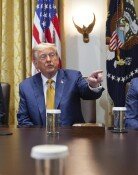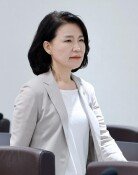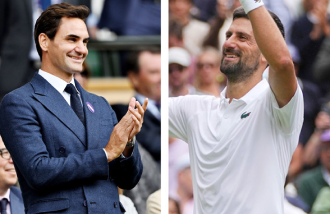Insider Gives Command Issue Options
Insider Gives Command Issue Options
Posted August. 18, 2006 03:00,
There are many ways for Korea to improve its command autonomy without altering the structure of the current wartime operational control and the Korea-U.S. Combined Forces Command systems.
A military source in Washington deeply involved in operations of the Korea-U.S. Combined Forces Command (CFC) had an interview with the Dong-A Ilbo on August 16 (local time) to reveal the composition and operational procedures of the Korea-U.S. CFC system that have not been disclosed so far.
With regard to Cheong Wa Daes emphasis on Koreas being the only country worldwide without wartime operational control, he began by saying, I am not sure whether the remark was intentional or was due to different interpretation or a lack of understanding.
Interviewee: Even in the current Korea-U.S. CFC system, the CFC commander does not execute his operational control over all the Korean troops. Korea and the U.S. have established a force list, which specifies troops to be assigned to the CFC in each stage of the Defense Condition (DEFCON). The list shows that among the three headquarters of the Korean Army, the 2nd Armysin charge of the home frontis commanded by the Korean President even during wartime. When it comes to the Capital Defense Command (CDC) headquarters, all but some part of it is under the command of the Korean President. The Special Task Force (STF) also comprises a separate Korea-U.S. joint organization. Overall, approximately 85% of the Korean troops are assigned to the Korea-U.S. combined forces during wartime, but only on the premise that the Korean President and the Joint Chief of Staff do not oppose it.
The Dong-A Ilbo: Cheong Wa Dae quoted the North Atlantic Treaty Organization (NATO) to emphasize, In NATO, member countries determine whether to hand over operational control or not.
Interviewee: The Korea-U.S. CFC cannot command anything if the two countries do not send out their troops during wartime. The troops prescribed to be assigned to the Korea-U.S. CFC are not unconditionally assigned to the Korea-U.S. CFC. On the force list, troops are classified into two categories: automatic and requested. The troops classified as requested are assigned only when Korea accepts the Korea-U.S. CFCs request for assignment.
The Dong-A Ilbo: Should Korea unconditionally transfer those troops prescribed to be automatically assigned?
Interviewee: The CFC commander is under the command of the Military Committee (MC), which consists of the Joint Chiefs of Staff of the two countries; and above that, the National Command and Military Authorities (NCMA) that comprises presidents and defense ministers of the two countries. The CFC commander cannot do anything if any one of the upper commands opposes it. Both the MC and the NCMA are run on a consensus basis. Operations should follow the operational plans that the two countries agreed to and drew up in advance; they always need the approvals of the two countries presidents.
The sources explanations were that if the Korean governments efforts to take back operational control does not include political and symbolical significances and aims at practically improving the command autonomy, that can be done without having to break the current framework. There can be other ways as well, such as reducing the size of automatically assigned troops or adding the precondition that they are automatically assigned if no opposition is suggested. It will also be possible to strengthen the procedure to transfer operational control as NATO has done. When it is taken into account that both NATO and the Korea-U.S. CFC were created on the premise that it is desirable to come up with combined forces for effective war operations, he added, the Korea-U.S. CFC system is much more efficient and prompt.
sechepa@donga.com srkim@donga.com



![[속보]尹 석방 124일 만에 재구속…법원 “증거인멸 염려”](https://dimg.donga.com/c/138/175/90/1/wps/NEWS/IMAGE/2025/07/10/131973390.1.jpg)



